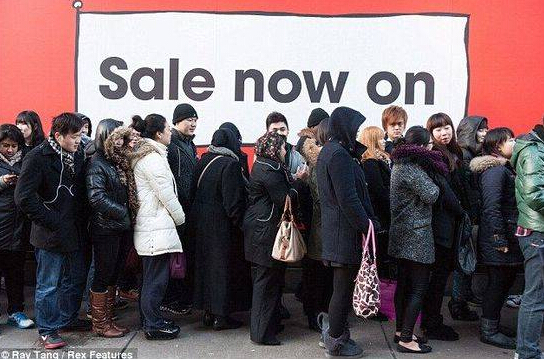 |
|
Chinese tourists wait in line out of a shopping store in the U.S. [file photo] |
Going shopping is a must-do thing for Chinese tourists travelling to the U.S. Thanks to low prices, they can always find something they badly need.
From t-shirts to sneakers, watches to iPhones, it seems that most consumer goods in the U.S. are cheaper than they are in China.
For example, the price of a pair of Levi’s pants in a U.S. store is about 30 to 40 dollars, while the price may go as high as 600 to 700 yuan (US$87.4-102.1) in China. An iPhone 7 (128G) is sold in the U.S. for 749 dollars, while in China you have to spend 6,188 yuan (US$901.2) to get one.
Chart 1: Price comparison between the U.S. and China
|
|
The U.S. (US$) |
China (US$) |
|
Pair of Levi’s pants |
30-40 |
87.4-102.1 |
|
iPhone 7 (128G) |
749 |
901.2 |
|
hair cut |
20-30 |
2.9-4.7 |
|
taxi starting price |
10 |
1.5 |
|
per-capita annual income |
40,000 |
7282.1 |
The per-capita annual income for an average American is about 40,000 dollars, but in China, people only earn 50,000 yuan (US$7282.1) a year on average – which means the American per-capita annual income is five or six times than that of Chinese.
However, some overseas Chinese found that it’s not cheap at all living in the U.S.
For example, if you want a haircut, you have to pay 20 to 30 dollars excluding tips in a Los Angeles salon; but in Beijing, it only costs you 20 to 30 yuan (US$2.9-4.7). The starting price for a taxi in Chicago is 10 dollars, but in Beijing and many Chinese big cities, it’s only 10 yuan (US$1.5).
Generally speaking, the price of consumer goods in the U.S. is lower than in China, but the price of service is higher. In other words, the U.S. has cheap manufactured goods, while the Chinese advantage falls on lower labor costs.
Follow this news feed: East Asia





